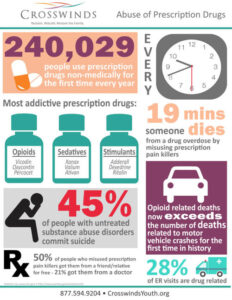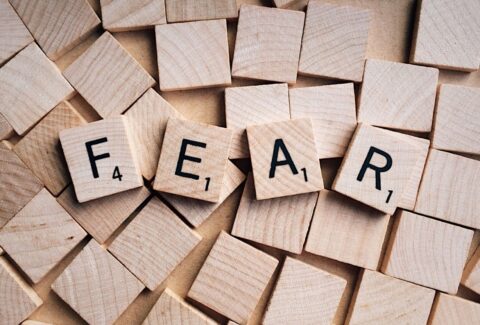What Causes Addiction?
LEARN MORE, PRACTICE DIFFERENTLY, AND FEEL CONFIDENT WORKING WITH CLIENTS BY JOINING US FOR A SEMINAR ON, “NEW STRATEGIES FOR SUBSTANCE USE ASSESSMENT,” ON FEBRUARY 20, 2019, 9:30AM – 4:30PM
“I was told to come here and see you to get medication for my bipolar. I was told I have bipolar, because my mood goes up and down, and that bipolar is why I can’t stay sober. Will I be able to stop using cocaine once I get meds for bipolar?” Josephine asked Darla, her psychiatrist, who was meeting with her for the first time, for an initial psychiatric assessment.
“Thank you for coming, Josephine. We are going to do our best to get to the bottom of all this. Substance use disorders are rather complex, but a thorough evaluation can really help,” responded Darla, with a smile.
“Not to know what happened before you were born is to remain a child forever,” according to Cicero, the great Roman philosopher. Learning about what came before us, through history, is therefore necessary, and, as clinicians and health professionals, the history of mental health and general physical health, in addition to addiction, all merit some attention.
Before the times of Hippocrates, illnesses or diseases were considered to either result from demonic possession or punishment by the gods. This explanatory model of illness persisted for centuries, until the adaptation of the scientific method into the field of medicine. While these explanatory models are still present in some cultures or subcultures, they are no longer as predominant in the world. Moreover, while some conditions have quickly been accepted within the scientific method of thinking, other conditions, like leprosy, epilepsy, and mental illness have not been so “lucky,” and the change in the way they are viewed and explained has been rather slow.
While explanations of addiction were not necessarily first rooted in beliefs of demonic possession or punishment from the gods, its initial explanatory model is still analogous to the rest of medicine, in that it was thought to be due to a weakness of character, and, therefore, the solution was to “straighten up,” “just be strong,” or “just say no.” We all know what has been the result of these beliefs, strategies, or tactics, so far.
Later, addiction was explained as the result of habits, which needed to stop, and “everything would go back to  normal.” This again has been shown to fail. Then came the self-medication theory, which, while a bit more sophisticated than the previous beliefs noted above, has been shown to be rather reductionist, and now, it is undeniable that just like any other conditions, addiction, or more specifically, substance use disorders, follow the bio-psycho-social and cultural model. From a biological standpoint, a psychiatric illness like Bipolar Disorder, as presumed in the case of Josephine, is an example of a biological contributing factor to the development of a Substance Use Disorder. But, this would be only one of the contributing factors-one piece of the puzzle, and addressing Josephine’s Bipolar Disorder will help with her Cocaine Use Disorder. Further, the other bio-psycho-social and cultural contributing factors also need to be addressed, as part of an overall plan around relapse prevention.
normal.” This again has been shown to fail. Then came the self-medication theory, which, while a bit more sophisticated than the previous beliefs noted above, has been shown to be rather reductionist, and now, it is undeniable that just like any other conditions, addiction, or more specifically, substance use disorders, follow the bio-psycho-social and cultural model. From a biological standpoint, a psychiatric illness like Bipolar Disorder, as presumed in the case of Josephine, is an example of a biological contributing factor to the development of a Substance Use Disorder. But, this would be only one of the contributing factors-one piece of the puzzle, and addressing Josephine’s Bipolar Disorder will help with her Cocaine Use Disorder. Further, the other bio-psycho-social and cultural contributing factors also need to be addressed, as part of an overall plan around relapse prevention.
 “I was told to come here and see you to get medications for my bipolar. I was told I have bipolar, because my mood goes up and down, and that bipolar is why I can’t stay sober. Will I be able to stop using cocaine once I get meds for bipolar?” Josephine asked Darla, her psychiatrist, who was meeting with her for the first time, for an initial psychiatric assessment. “Thank you for coming, Josephine. We are going to do our best to get to the bottom of all this. Substance use disorders are rather complex, but a thorough evaluation can really help,” responded Darla, with a smile.
“I was told to come here and see you to get medications for my bipolar. I was told I have bipolar, because my mood goes up and down, and that bipolar is why I can’t stay sober. Will I be able to stop using cocaine once I get meds for bipolar?” Josephine asked Darla, her psychiatrist, who was meeting with her for the first time, for an initial psychiatric assessment. “Thank you for coming, Josephine. We are going to do our best to get to the bottom of all this. Substance use disorders are rather complex, but a thorough evaluation can really help,” responded Darla, with a smile.
Contrary to popular belief, while personal efforts can contribute to one’s attendance to appointments, groups, and to one taking medications as prescribed, addiction or substance use disorders are caused by a combination of bio-psycho-social and cultural factors, and the treatment also requires the same multidimensional approach. As clinicians, it is our role and duty to follow this framework in our assessment, treatment, and approach with our patients and clients, and especially in how we communicate with them and talk about them and about addiction, as a whole.
LEARN MORE, PRACTICE DIFFERENTLY, AND FEEL CONFIDENT WORKING WITH CLIENTS BY JOINING US FOR A SEMINAR ON, “NEW STRATEGIES FOR SUBSTANCE USE ASSESSMENT,” ON FEBRUARY 20, 2019, 9:30AM – 4:30PM
References:
-
National Institute on Drug Addiction (2014). Drugs and the Brain: Introducing the Human Brain.
-
Peele, S. & DeGrandpre, R.J. (1998). Introduction: a brief history of the concept of addiction. Cocaine and the Concepts of Addiction: Environmental Factors in Drug Compulsions. Addiction Research, 6: 235-263.
-
Roberts, A.J.; Koob, G.F. (1997). The neurobiology of addiction: an overview.
-
Sarramon, C; Verdoux, H; Schmitt, L; Bourgeois, M (1999). “Addiction and personality traits: Sensation seeking, anhedonia, impulsivity”. L’Encéphale. 25 (6): 569–75.
-
Franken, Ingmar H.A.; Muris, Peter; Georgieva, Irina (2006). “Gray’s model of personality and addiction”. Addictive Behaviors. 31 (3): 399–403.
-
Washton, Arnold M.; Boundy, Donna (1989). “The Addictive Personality”. Willpower’s Not Enough: Understanding and Recovering From Addictions of Every Kind. HarperCollins. pp. 59–
-
Marlatt, G. Alan; Witkiewitz, Katie, eds. (2009). Addictive Behaviors. Washington DC: American Psychological Association.







